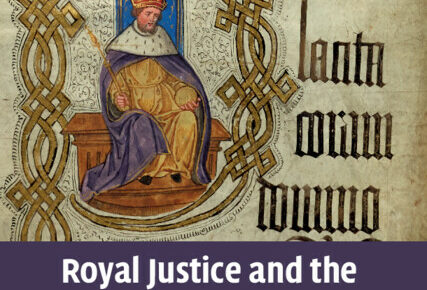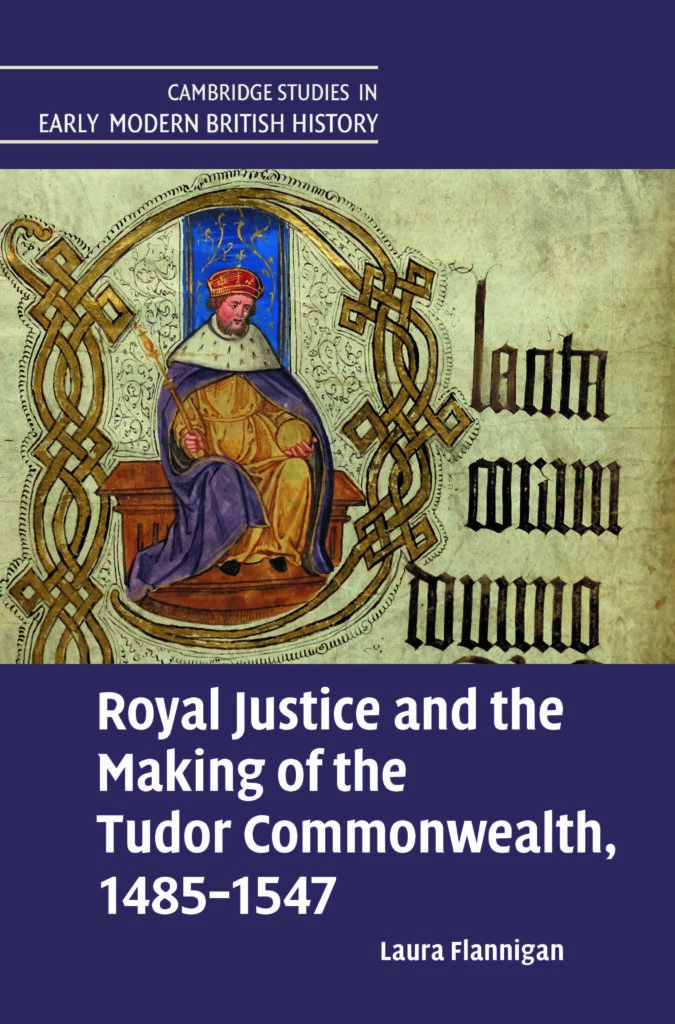
In spring 1533, a ninety-year-old widow named Avice Willes compiled a petition setting out various grievances she held against her neighbours. Owing to her ‘debilitation, weakness, and innocency’, she lamented, certain young men in her neighbourhood of Hothfield, Kent, had tricked her into selling a mansion and barn for much less than their true value. Worse, she and her adult son were thereby deprived of their ‘patrimony and right’. Petitioning in this manner was not uncommon in sixteenth-century England. More unusual is that Avice’s petition was addressed to the king himself – to King Henry VIII, no less – and exhibits a belief that he would personally read and provide redress by way of his ‘abundant charity, alms, and pity’. That a poor widow living far from the centre of power could have expected direct intervention by the kingdom’s highest authority into her individual troubles may seem fantastical to modern eyes. It certainly contrasts with the established picture of the pomp and ceremony around the Tudor court, household, and government. The wider realm tends to come into frame only in the contexts of taxation, progresses, and rebellion – acquiescence or resistance. In fact, Avice’s plight aligned with contemporary expectations that the monarch had a special responsibility for protecting their most vulnerable subjects.
My book, Royal Justice and the Making of the Tudor Commonwealth, 1485-1547, reveals that she was far from the only royal subject who requested and received the judicial assistance of the Crown on these terms. It charts the emergence of a system of courts designed to dispense royal justice in cases like Avice’s, from its origins in late-medieval council ordinances to its dissolution on the eve of the seventeenth-century civil wars. Bringing the traditional institutional approach to Tudor governmental history into line with social and legal histories, I ask: what could people with civil complaints reasonably expect from this new, royal forum for justice? How effective were justice-giving processes for fostering communication and cohesion between subjects and sovereigns? And who benefitted the most: litigants with axes to grind against their foes, or a new dynasty seeking to legitimise itself?
Answering these questions and re-assessing Tudor governance is made possible by the use of previously unstudied records for this period. The so-called ‘Court of Requests’, the name eventually given to the attendant royal council sitting as a judicial tribunal, has left behind thousands of petitions and hundreds of entries recorded in its registers of business and orders. These documents record judicial activity across the reigns of the first two Tudor kings and beyond; give voice to a huge swathe of society, from paupers and poor priors to the greatest noblemen; and cover a geographical scope encompassing all the king’s dominions in England, Wales, and France.
The book firstly takes a step back from this archival detail to survey contemporary thought about justice-giving as both principle and practice of government. Noticeable in literature and speeches of the late-medieval period is the paradoxical nature of ‘justice’ as a political ideal. Giving justice freely and indifferent was widely accepted to be a cornerstone of good governance, by treatise-writers, parliamentary speakers, and popular poetry alike. At the same time, in such a stratified society few agreed on how justice ought to be administered – for whom, and to what end – and whether it was really available at all. No doubt sensitive to these sentiments, successive medieval kings had set aside time in the schedule of their councils to examine subjects’ petitions, prioritising those of the poorest suitors. By the end of the fifteenth century this attention to judicial provision had extended to installing offshoots of the royal council in the provinces: in the marches of Wales and in the northernmost English counties. These institutions helped the Crown to keep an eye on these especially distant and troublesome regions, of course. But they also represented a commitment to conciliar justice-giving, which could be more authoritative and more flexible than existing jurisdictions.
Charting the rise of another branch of that council, the Court of Requests, presents a challenge to traditional governmental histories of the period. The first use of the shorthand term ‘requests’ for judicial business appears within financial records from the short reign of Richard III, while the earliest known reference to a ‘court of requests’ comes in an account describing efforts to abolish that very same body at the Henry VII’s first parliament in 1485. Both of these references, confusingly, date to well before the first records of that ‘court’ actually appeared, in the early 1490s. This chronology complicates assumptions about any clean regime break in 1485, of course, but also about the drive for institutionalisation under the early Tudors. The development of this tribunal thereafter was more protracted than old narratives of a ‘revolution’ in early-sixteenth-government might have us expect. It spent much of its formative period not at the political centre of Westminster but in train with the king, as part of his itinerant entourage. It typically observed no consistent termly, weekly, or daily routine and could seemingly be accessed by petitioners at any place and at any time. I argue that the provision of this most personal royal justice was shaped less by governmental policy than by the simple need to receive and process petitions brought before the king’s retinue.
The second part of the book sets out to establish from the surviving archive who sued to the king, where they came from, and what they complained about. A survey of litigants confirms that the king’s justice was accessible to people from all backgrounds and corners of the country, including the ‘poorest prior in England’ and individuals admitted to the courts as ‘paupers’ but also senior clergymen and magnates. Most petitioners justified a suit to the king above all other legal authorities on the basis of being chronically poor or impoverished by the actions of their adversaries. This was reflected in the types of complaints they presented: disputes between competing claimants about the right to land, framed by narratives of embezzlement, riot, and forcible ejection; gripes about outstanding debts, especially those set out in wills and often ensuing between widows and male relatives; and contractual disagreements over goods and wares between merchants, most typically. Efforts to sue for remedies at the lower levels of the legal system – before the lord of the relevant manor, the sheriff or the mayor, the justices of the peace – were often described as having been hindered by judicial delay or corruption. Petitions therefore upheld the monarch’s place as ultimate arbiter in all his subjects’ disputes, especially those where remedy could not be easily found elsewhere.
The book finally assesses what litigants could gain from royal justice via the king’s Court of Requests. Certainly, this tribunal and its judges proved receptive to demands to intervene with unruly subjects, and to summon them under harsh financial penalties. Some of these orders were even signed by Henry VII and Henry VIII personally, setting off a fairly speedy series of investigations leading to a full hearing with all parties, lawyers, and councillors present. Decrees engrossed onto parchment and signed by the king and his councillors were hastily conveyed home by winning parties as leverage in long-fought feuds. The overall impression is of a surprisingly effective set of judicial procedures developed under the early Tudor kings, with considerable social depth and geographical breadth and with the potential to promote royal authority over that of local figureheads.
All this being said, I resist painting too rosy a picture of royal justice as cohesive force. The perspective of people accused in petitions and summoned before the council to make answer is especially enlightening, and understudied. Their responses drew on contemporary debates amongst the realm’s legal authorities about whether royal judicial procedures were too powerful, and whether the king’s judges – in this context, his household clergymen – were too ignorant of the law. Commissioners appointed by the king to examine these disputes locally found themselves overly burdened with the responsibility of untangling complex interests. Defendants and local authorities alike resisted and rejected the king’s orders. We should not take for granted that royal justice was automatically accepted and smoothly administered, then.
Overall, Royal Justice and the Making of the Tudor Commonwealth reveals more about the inner workings of government in this eventful period and shows it to have been more socially sensitive than we might have expected. It also complicates our understandings of the role of litigation in politics and society. The royal justice encapsulated in the Court of Requests was praised by contemporaries as bridging the gap ‘between the prince and petitioners’, and was memorialised by later writers for ‘stilling the passions’ of warring neighbours. Yet this court and the wider system of conciliar justice would later be brought down by the Long Parliament on the eve of the English Civil War in 1641 – a final and more successful attempt at abolition, a century and a half after the first in 1485. This book tells the story of the careful balance maintained in between.

Latest Comments
Have your say!